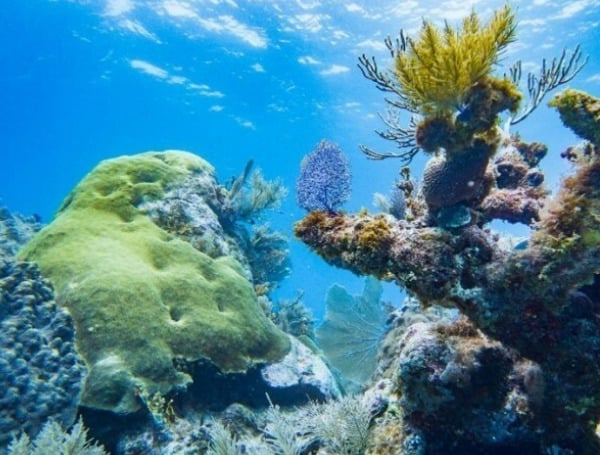Coral Reef (File) Coral reefs are some of our planet's most diverse and vibrant ecosystems. They provide shelter, spawning grounds, and protection
Coral reefs are some of our planet’s most diverse and vibrant ecosystems. They provide shelter, spawning grounds, and protection from predators for thousands of marine species.
However, scientists report that these delicate ecosystems face a significant threat: coral bleaching.
According to the US National Oceanic and Atmospheric Administration (NOAA), the fourth global mass coral bleaching event has begun.
Coral bleaching occurs when corals lose their vibrant colors and turn white. This phenomenon is a result of the expulsion of microscopic algae called zooxanthellae, which live within the coral in a mutually beneficial relationship.
These algae provide food for the coral through photosynthesis and give them their characteristic colors. When corals experience environmental stress, such as changes in temperature, light, or nutrient levels, they expel the zooxanthellae, causing them to turn completely white.
Read: UF-Led Research Gets Help From NFL Player, Air Force Veteran To Restock Sea Urchins On Coral Reef
While coral bleaching is a natural process, its increasing frequency and severity have made it a growing concern.
Rising ocean temperatures are the primary cause of coral bleaching. However, other factors, such as pollution, extreme low tides, and excessive sunlight, can also contribute to bleaching events.
The leading cause of coral bleaching is the rise in ocean temperatures. Even a slight increase in water temperature, as little as 2 degrees Fahrenheit, can trigger bleaching.
El Niño, a natural climate occurrence, has led to higher temperatures since June, although it appears to be diminishing.
Read: Forecasters Eye A ‘Hyperactive’ 2024 Hurricane Season: Florida Residents Should Prep Now
When corals are exposed to prolonged high temperatures, they become stressed and expel the zooxanthellae, resulting in bleaching.
Warmer water temperatures disrupt the symbiotic relationship between corals and algae, leading to the loss of their primary food source and the eventual death of the coral if the stress continues.
Pollution and Runoff
Pollution, particularly from human activities, can contribute to coral bleaching. Runoff from agricultural areas and coastal developments carries pollutants such as fertilizers, pesticides, and sediment into the ocean. These pollutants can stress corals and make them more susceptible to bleaching. Additionally, the increased nutrient levels from runoff can lead to the overgrowth of algae, blocking sunlight and depriving corals of the light they need for survival.
Read: Florida Aquarium in Apollo Beach Spawns Coral
Extreme Low Tides
During periods of extreme low tides, corals can be exposed to air for extended periods. This exposure to air, coupled with high temperatures, can cause stress to the corals and lead to bleaching. While low tides alone may not cause significant bleaching events, they can exacerbate the effects of other stressors, making corals more vulnerable.
Excessive Sunlight
Corals rely on a delicate balance of sunlight for their survival. However, excessive sunlight, especially in shallow-water corals, can contribute to bleaching. When water temperatures are already high, high solar irradiance can intensify the stress on corals and increase the likelihood of bleaching.
Impacts of Coral Bleaching
Ecological Impacts
Coral bleaching has severe ecological impacts, affecting both marine species and the overall health of coral reef ecosystems. Coral reefs support a vast array of marine life, including fish, sea turtles, crabs, shrimp, and many more. When corals bleach and eventually die, these species lose their habitats, spawning grounds, and sources of food. The collapse of reef ecosystems can lead to the decline and potential extinction of already at-risk species, disrupting the delicate balance of marine ecosystems.
Economic Impacts
The impacts of coral bleaching extend beyond marine life and affect human communities as well. Coral reefs provide essential services to coastal communities, acting as natural barriers that absorb the force of waves and storm surges, protecting coastal areas from erosion and flooding.
Without healthy coral reefs, coastal communities may have to rely on costly and less effective man-made seawalls for protection.
Also, coral reefs are vital in supporting tourism and recreational activities. Reef tourism brings in billions of dollars each year and supports thousands of jobs worldwide.
Bleached coral reefs devoid of their vibrant marine species not only diminish the beauty and appeal of these destinations but also jeopardize the livelihoods of those dependent on tourism.
Help support the Tampa Free Press by making any small donation by clicking here.
Android Users, Click To Download The Tampa Free Press App And Never Miss A Story. Follow Us On Facebook and Twitter. Sign up for our free newsletter.


